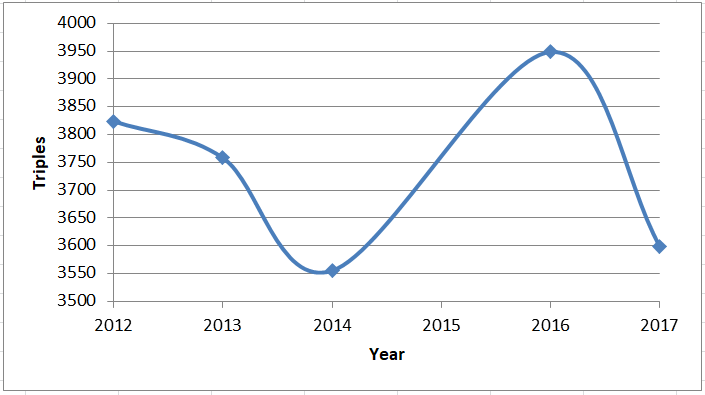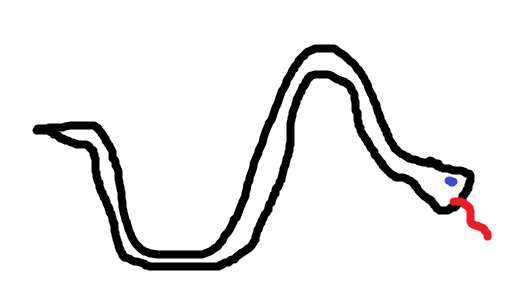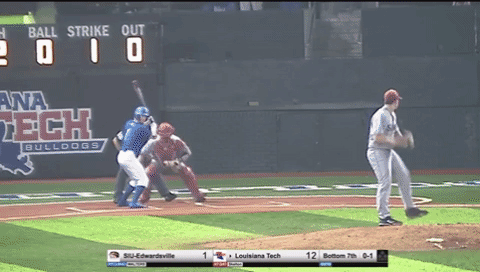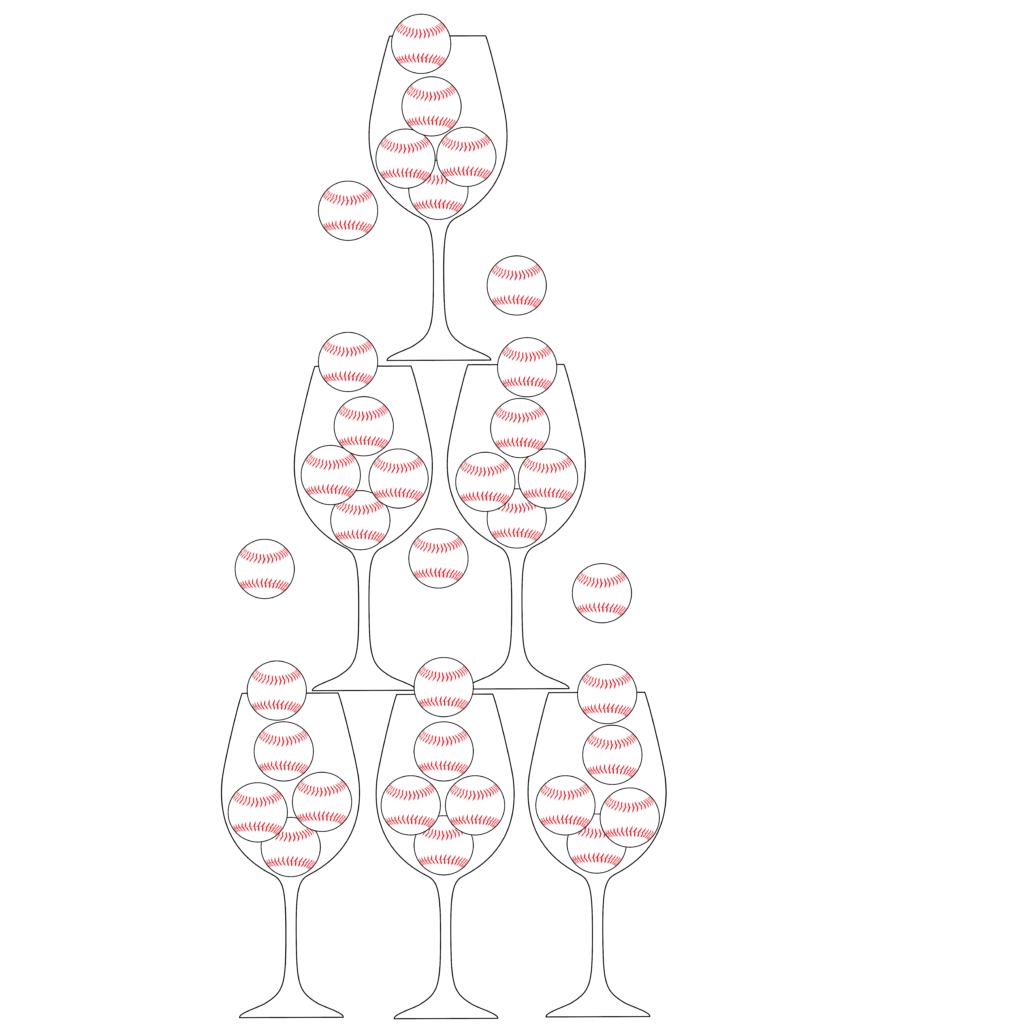What do Arizona, Kansas, Texas A&M, New Mexico State, Lafayette (PA), and Louisiana Tech have in common? They all are tied for 6th in college baseball with 12 triples.
But what exactly does that mean? How meaningful are triples? How common are they? How much do they help a team? Can I do anything other than ask questions anymore? Please help?
How Often Triples Happen
Last year there were 3,599 triples across college baseball. There are 298 Division 1 baseball programs. So that averages to about 12 triples per team per year. With 12 already, Tech is on pace to double that average number.
But at least in the major leagues, there is reason to believe the triple is becoming a lost art. Triples are happening less and less year over year in Major League Baseball. But what about in college ball?
Here’s a chart of the number of triples over the past few years:

That doesn’t look like a trend down to me. Instead it looks much more like this picture of a snake I drew in Microsoft Paint:

Granted, when talking about trends like these, you often want to look at the past few decades, not just the past few years. Unfortunately, the NCAA does not have a record of triples totals from before 2012. But at least in the past few years, it seems that triples have their ups and downs, but aren’t being phased out of college baseball.
How to Triple
Triples are not very common in baseball at any level. In order to have a chance of a triple, many things have to go right:
- Ball is hit into the Right Field.
- This makes the throw in to third the farthest it can possibly be.
- Ball has to be hit hard.
- Hit ball hard make ball go fast.
- The ball has to make it all the way to the RF corner.
- Usually cannot be a fly ball.
- Fly balls give the outfielder more time to get under it to catch it.
- The batter is fast enough to make it to third.
- The team has to have an aggressive base-running philosophy.
Of course, there are exceptions to these rules, but this is how a run-of-the-mill triple is accomplished.
Who hit the triples?
Tech’s 12 triples have been hit by six players:
- Dalton Skelton (5)
- Mason Mallard (2)
- Hunter Wells (1)
- Parker Bates (1)
- Tanner Huddleston (1)
- Chris Clayton (1)
- Mason Robinson (1)
Almost half of those triples have come from one player: Dalton Skelton. How impressive is that? Skelton ranks 3rd nationally, but how is Skelton getting to third? (See what I did there?)
Three of the triples came in games that were out-of-conference road games (so no CUSA.tv), but for the two other triples, we can go to the tape:
SIUe – Friday Game

So before anything else, take note of the score. If there’s any time to do something risky like trying to stretch a double into a triple, it’s when you’re up by eleven runs.
Here, all five of the above steps are checked off. Skelton hits the ball sharply on the ground past the diving first baseman, allowing the ball to roll all the way to deep right field. Skelton then has the speed to make it the 270 feet three-quarters of the way around the diamond to third base. The throw (and possible relay) from right field was not very accurate, but Skelton was able to make it to third in plenty of time.
Also, notice how quick he is out of the batters box. He knows immediately that this could be a triple.
Rice – Saturday Doubleheader Game 2

This time the hit is a line drive, but again the ball goes into the right field corner. The ball is hit harder, so the right fielder is able to get over to it faster. This leads to the close play at third of Skelton needing to slide under the tag.
The next game was at Northwestern State, where Skelton recorded his fourth triple.
The Value of Triples
Triples are exciting, sure, but do they have value? Or at least were the Bulldogs any better off with a triple than a double?
Let’s go triple-by-triple and see what happened after:
| # | G | Player | Scored? | Did getting a triple help? |
| 1 | 6 | Skelton | Yes | Yes. Scored on sac fly. |
| 2 | 7 | Clayton | Yes | Yes. Scored on ground ball. |
| 3 | 9 | Mallard | No | No. |
| 4 | 13 | Bates | Yes | Yes. Scored on a single to LF. |
| 5 | 18 | Skelton | Yes | Yes. Scored on sac fly. |
| 6 | 21 | Skelton | Yes | Yes. Scored on ground ball. |
| 7 | 21 | Mallard | No | No. Thrown out at the plate. |
| 8 | 22 | Skelton | No | No. |
| 9 | 25 | Wells | Yes | No. Would have scored regardless. |
| 10 | 26 | Huddleston | No | No. Out at home plate. |
| 10 | 27 | Skelton | Yes | No. Robinson tripled after. |
| 11 | 27 | Robinson | No | No. |
So, 7/12 times a player tripled, they scored. And 5/7 of those times, the player would not have scored if they had settled for a double. So, because of this aggressive base-running, the Bulldogs were able to score five more runs than they would have been able to otherwise.
Conclusion
Dalton Skelton has more than proven his worth in his sophomore campaign for his triples total alone. Also as a team, Tech has been able to get triples more than almost any other team in college baseball. This aggressiveness has allowed the Dogs to put more runs on the board.
Also, if you were keeping count, I used the word triple 34 times in this post. It’s starting not to sound like a word anymore.


Pingback: Mason Mallard is Stealing the Show – gtpdd